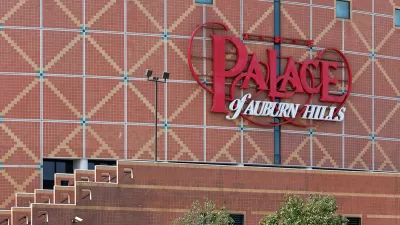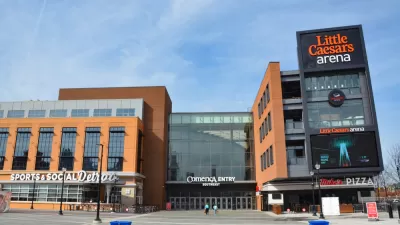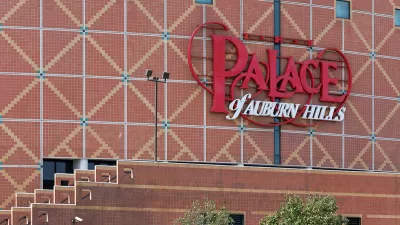The short life of the Palace of Auburn Hills, once home to the NBA's Detroit Pistons, is a "colossal waste," according to John Gallagher.

John Gallagher isn't happy about the imminent demise of the Palace of Auburn Hills:
To spend $90 million in the 1980s to build the Palace (about $200 million in today’s dollars) and pour $40 million into upgrades and renovations not so long ago, and then to tear the whole thing down as its owner Tom Gores announced will happen soon — that’s not sustainability. It’s a waste of colossal dimensions.
Gallagher describes the current status of future plans for the Palace site, and notes that the new development is likely to be popular. "Steve Morris, managing principal with Axix Advisors, a Farmington Hills real estate firm, said the Palace site is well suited for a light industrial, high-tech research park. Add to that the strategic placement near I-75 and main roads and the switch from the Palace to a new use seems a no-brainer," writes Gallagher. Other recent development in the area has leased up quickly.
But development potential doesn't excuse, according to Gallagher's argument, the environmental waste of tearing down a massive building that only stood for 30 years. "It’s the architectural equivalent of single-use plastic straws and utensils. Use 'em and toss 'em." And the Palace isn't the only example of the practice in recent years.
FULL STORY: The short life of the Palace of Auburn Hills represents colossal waste of resources

Planetizen Federal Action Tracker
A weekly monitor of how Trump’s orders and actions are impacting planners and planning in America.

Maui's Vacation Rental Debate Turns Ugly
Verbal attacks, misinformation campaigns and fistfights plague a high-stakes debate to convert thousands of vacation rentals into long-term housing.

San Francisco Suspends Traffic Calming Amidst Record Deaths
Citing “a challenging fiscal landscape,” the city will cease the program on the heels of 42 traffic deaths, including 24 pedestrians.

Defunct Pittsburgh Power Plant to Become Residential Tower
A decommissioned steam heat plant will be redeveloped into almost 100 affordable housing units.

Trump Prompts Restructuring of Transportation Research Board in “Unprecedented Overreach”
The TRB has eliminated more than half of its committees including those focused on climate, equity, and cities.

Amtrak Rolls Out New Orleans to Alabama “Mardi Gras” Train
The new service will operate morning and evening departures between Mobile and New Orleans.
Urban Design for Planners 1: Software Tools
This six-course series explores essential urban design concepts using open source software and equips planners with the tools they need to participate fully in the urban design process.
Planning for Universal Design
Learn the tools for implementing Universal Design in planning regulations.
Heyer Gruel & Associates PA
JM Goldson LLC
Custer County Colorado
City of Camden Redevelopment Agency
City of Astoria
Transportation Research & Education Center (TREC) at Portland State University
Jefferson Parish Government
Camden Redevelopment Agency
City of Claremont





























